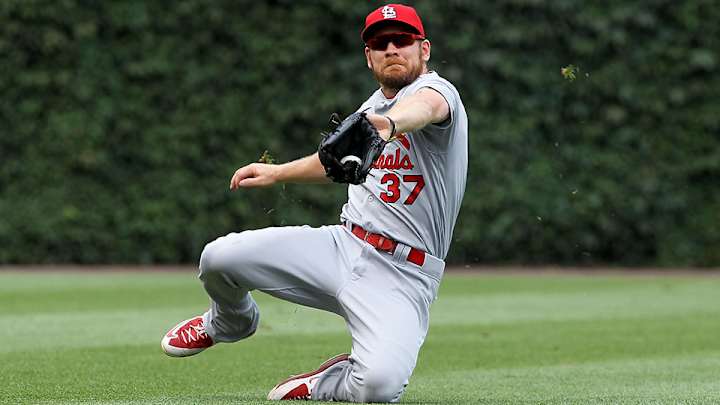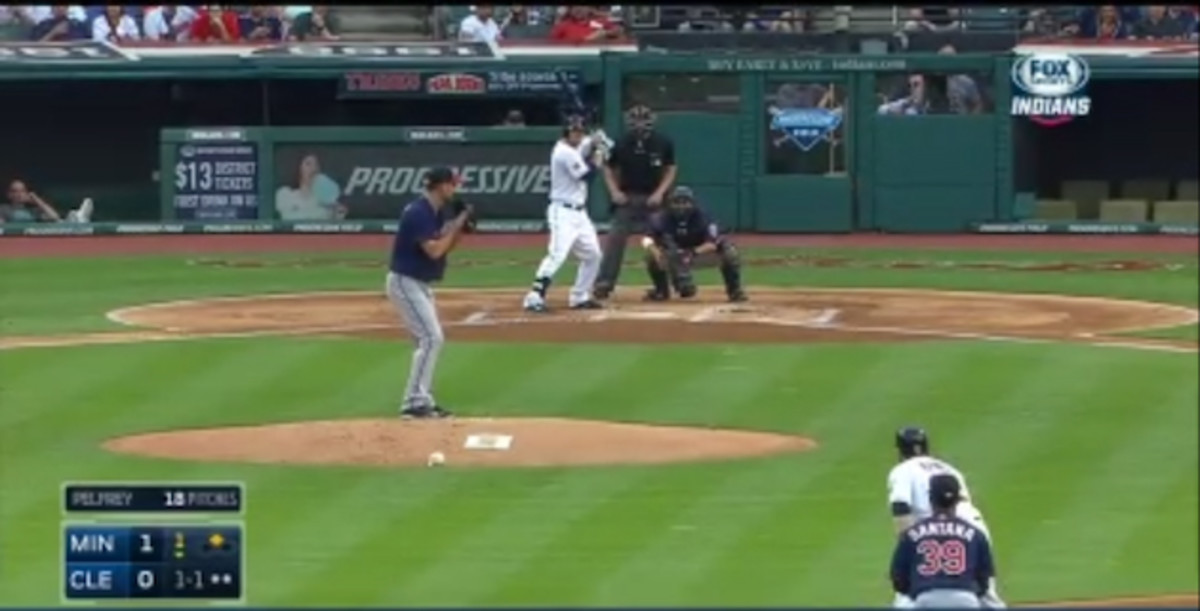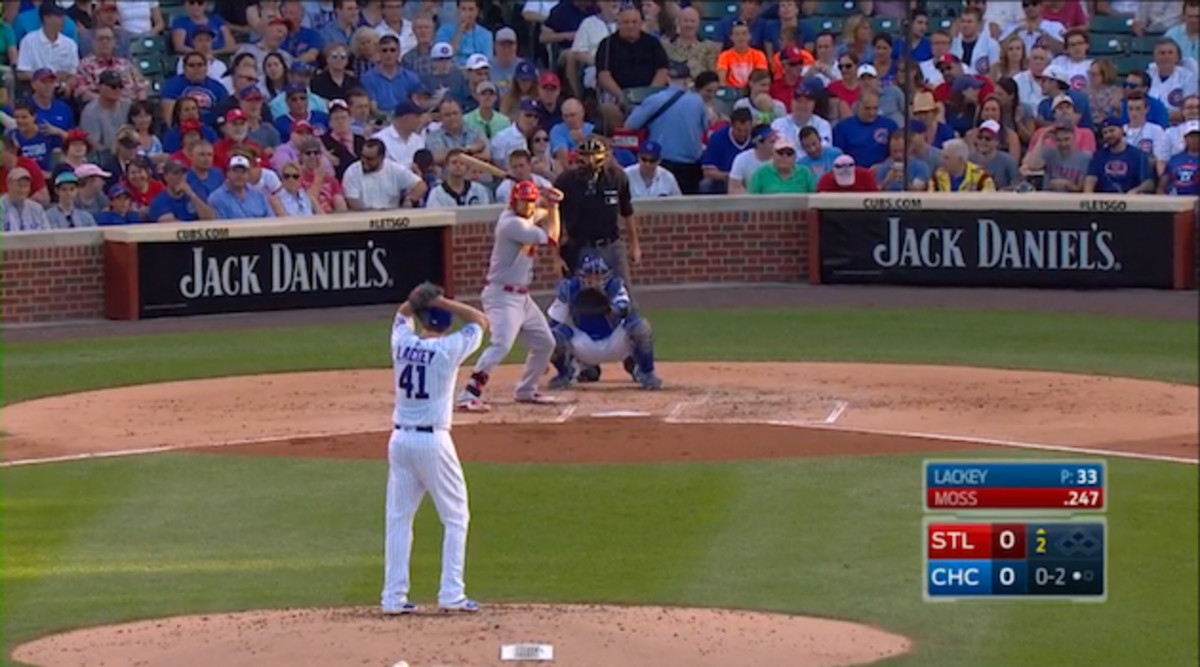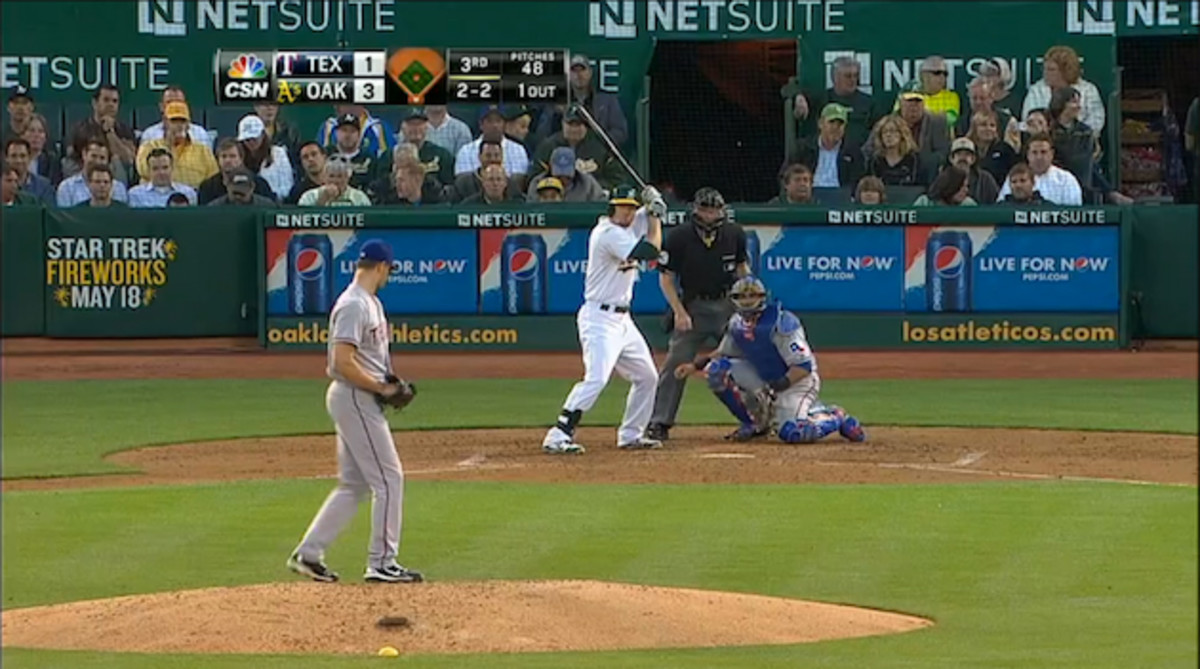Fantasy baseball waiver wire: Brandon Moss thriving in part-time role

Your teams. Your favorite writers. Wherever you want them. Personalize SI with our new App. Install on iOS or Android.
Last season, I was an unabashed supporter of the Indians bringing in Brandon Moss. The veteran slugger was coming off a three-year stretch in which he hit .254/.340/.504 while averaging 25 homers a season playing half his games at cavernous O.co Coliseum in Oakland. The move to Progressive Field, and the guarantee of an everyday job, made Moss, in my eyes, one of the best bets for cheap 30-homer power.
Moss was dreadful in half a season with the Indians before they shipped him to the Cardinals at the trade deadline. He was no better in St. Louis, and finished the season with a .226/.304/.407 slash line with 19 homers that would have been meaningless for fantasy owners next to those abysmal rates. He entered 2016 without that same guarantee of an everyday spot in the St. Louis lineup and was nowhere near the fantasy radar.
Turns out, I was one year off.
Mets reunite with Reyes but Nimmo promotion will have bigger impact
Moss is thriving in a part-time role with the Cardinals this season. Moss has started 43 of the Cardinals’ 73 games, splitting his time between first base and the outfield while getting nearly all of his time against righties. He’s hitting .251/.341/.572 with 16 homers and 36 RBI. Now obviously he’s not playing in 162 games this season, but just to give you an idea of how dangerous he has been, his 162-game pace would have him on track to hit 42 home runs. Even if Moss falls short of 500 plate appearances this season, he’s a threat to leave the yard 30 times. That, combined with his dual eligibility and presence in a potent St. Louis lineup, makes him a hot commodity in all fantasy formats.
It’s hard to find a statistically-based explanation for Moss’s resurgence this year. His batted-ball rates are essentially in line with where they were a season ago. He is hitting more fly balls and fewer ground balls, but the spread isn’t significant. His line-drive and hard-hit rates are nearly identical, as are his strikeout and walk rates. His BABIP is a bit higher this season, checking in at .290 compared with last year’s .285. Statistically, the Moss who is once again a significant power threat this year is no different than the one who was a serious disappointment with two teams last year.
There is a slight difference in Moss’s stance this season compared with the one he trotted out in 2015. Let’s first take a look at a couple screenshots as the pitcher begins to deliver. The first is from last season, while the second is this year.


Last year, Moss was completely upright. This year, he’s a little more compact with a deeper bend in his knee. His hands are basically in the same place, but lowering his body has had the effect of raising his hands. This season his hands are up by his ear, if not a little above it, whereas last year they were at about chin height. That lower bend has also forced his feet to be slightly more apart.
It’s certainly possible that this was the tweak Moss needed. Unfortunately, we can throw a little cold water on that argument by going back to 2013 when Moss hit .256/.337/.522 with 23 homers for the A’s. Check out his stance that season.

It’s exactly the same as what we saw when he foundered in Cleveland last year.
Moss’s swing from season to season is essentially the same.
His load is short and quiet both years. He squares his feet as the pitcher starts to deliver the pitch, and unleashes a violent swing. We can safely chalk up any minor differences we see in these two swings to the fact that one was a changeup off the plate away, while the other was a center-cut fastball. It appears Moss hasn’t changed anything once the action begins. All of his adjustments have come in his setup at the plate.
Is that responsible for Moss turning into the 2012 through ’14 version of himself for the Cardinals this season? It’s certainly possible that something that once worked for him when he was 29 years old no longer did when he was 31, necessitating a change that he didn’t find until this year. We cannot, however, say that definitively. While we can’t draw a straight line from Moss’s new stance to his positive turn, we do know that he made a change and that he is hitting the ball like he did during the best three-year stretch of his career. That’s enough to make him a recommended add in all formats.
Melvin Upton, OF, Padres
Upton’s 2016 resurgence continues, with the 31-year-old hitting .259/.309/.423 and, much more importantly, on pace for 20 homers and 35 steals. With counting stats like that, you can live with Upton’s rates. He also has 36 runs and RBIs, making him a true four-category player. It’s almost July. There’s no reason to think the production we’ve seen from Upton this season is fake.
Devon Travis, 2B, Blue Jays
Fantasy baseball pitching streams: Paxton, Reed among spot start picks
Travis has been on fire for the better part of the last two weeks, going 17 for 38 with three homers and nine RBIs in his last 10 games. What’s more, John Gibbons has moved him back to the top of the potent Toronto lineup. He’ll easily be a top-10 second baseman the rest of the way, and the bet here is that Travis makes his way into the top five from this point forward. That he’s still available in seven out of every 10 leagues is lunacy.
David Peralta, OF, Diamondbacks
Yes, Peralta is on the DL with a lower back strain, the second time he has gone on the shelf this season. That just means you have an opportunity to add him and play with an extra roster spot for a couple weeks. Peralta hit .312/.371/.522 with 17 home runs last season. He has been beset by injury this year, but he didn’t forget how to swing a bat. There’s no risk in adding him, putting him on your DL and giving him an audition when he returns.
Danny Espinosa, 1B/2B/3B/SS, Nationals
Well that’s one way to hold off Trea Turner. Espinosa is putting the finishing touches on an excellent June, during which he has hit .279/.383/.632 with seven homers and 12 RBIs. At the start of the month, it appeared he would finally give way to top prospect Turner, even with a manager like Dusty Baker who famously doesn’t trust rookies. Instead, Espinosa mashed his way into some job security, and that should make him intriguing in fantasy leagues. He can play four different positions, a few of which can be tricky for fantasy owners.
Joe Panik, 2B, Giants
Panik plays a shallow position and hits second in a strong San Francisco lineup. That right there is enough to put him on the fantasy radar. He’s having a great June, slashing .284/.333/.432 with two homers and three doubles. Thanks in part to his spot in the order, he has scored 20 runs and driven in 16 more in the month. Panik’s counting stats will make him a fantasy-relevant second baseman for the remainder of the season.
• VERDUCCI: Home run spike brings offense but also conspiracy theories
James Paxton, SP, Mariners
Paxton has made five starts this season, looking like an entirely different pitcher thanks to velocity that we had never before seen from him. Paxton’s average fastball velocity sits in the 97-98 mph range, whereas it used to be down at 93-94. The new level of velocity alone is enough to make him a worthwhile add in most fantasy formats. Paxton’s WHIP is ugly over his first 29 2/3 innings, but he has a 3.34 ERA, 3.06 FIP and 34 strikeouts.
Shawn Kelley, RP, Nationals
Rockies’ Nolan Arenado adding extra level to his already-elite hitting
Kelley likely won’t be closing for Washington much longer. Jonathan Papelbon, who’s on the DL with a strain in his side, will start a rehab assignment this week, perhaps as soon as Monday. Still, even if you’re only interested in Kelley as a closer, he has at least another week of ninth-inning duty ahead of him. On top of that, he has value, depending on your format, as a setup man. Kelley has a 2.39 ERA, 1.99 FIP, 0.87 WHIP and 37 strikeouts against six walks in 26 1/3 innings this season. You don’t need to be in a league that counts holds to find value in a line like that.
Mike Leake, SP, Cardinals
Leake has been quietly effective since the beginning of June, compiling a 2.70 ERA and 1.05 WHIP over his last eight starts. That stretch includes an outing in which he surrendered six runs on 10 hits in a loss to the Reds, as well. Leake isn’t a huge strikeout pitcher, but he doesn’t walk anyone and he keeps the ball on the ground. Combine that with a strong St. Louis offense at his back, and Leake looks like a three-category pitcher for the rest of the season.
A.J. Reed, 1B, Astros
Awards Watch: Terrific AL MVP race gets tighter and tighter
The Astros promoted Reed from Triple A Fresno over the weekend after it was clear he had nothing left to prove in the minors. Reed got his first start—in which he went 0 for 2 with two walks, one RBI and two runs—as a DH, but he’s going to see plenty of time at first base for Houston, too. No matter if he plays first or DH, he is going to play. Reed slashed .266/.345/.509 with 11 homers in 252 plate appearances for Fresno. Houston didn’t bring him up in the middle of a disappointing season for the team so he could sit on the bench. Reed should be a priority add for anyone looking for help in the power department.
Nick Hundley, C, Rockies
We’ve already talked about Hundley a few times in the Waiver Wire column this season. The catcher position has been a disaster this year. You could do a whole lot worse than bet on a guy who plays half his games at Coors Field. Hundley is hitting .258/.373/.484 with four homers and seven doubles in 111 plate appearances this year after slashing .301/.339/.467 with 10 jacks and 21 doubles in 389 trips to the plate a year ago.
Alex Reyes, SP, Cardinals; Tyler Glasnow, SP, Pirates
These two top pitching prospects can’t be far from promotion to the majors. Reyes, a consensus top-10 prospect, has a 4.35 ERA, 1.42 WHIP and 48 strikeouts in 31 innings this season. Ignore the rates for a second and consider how dominant he has been in terms of missing bats. Reyes missed the first two months of the season because of a suspension, so there’s a chance he’s still shaking off the rust, and it’s likely the Cardinals want to get him a bit more stretched out before bringing him to the show. It’s probable we see him, however, a bit later this summer. Glasnow, meanwhile, could be closer to the majors, having been a mostly dominant force at Triple A Indianapolis all season. He hasn’t allowed a run in his last three starts, but has been limited to 17 2/3 innings in that time because of his control. Glasnow has fanned 23 batters in those three outings, but has also issued 16 walks. That’s really the only problem that could hold him back. It’s unlikely the Pirates will let that dissuade them from promoting him in the near future.
